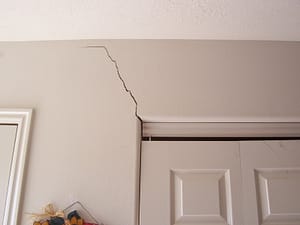What Does Best Basement Waterproofing Do?
What Does Best Basement Waterproofing Do?
Blog Article
All about Best Basement Waterproofing
Table of ContentsThe Facts About Best Basement Waterproofing UncoveredNot known Facts About Best Basement WaterproofingThe Buzz on Best Basement WaterproofingThe 9-Second Trick For Best Basement WaterproofingBest Basement Waterproofing Fundamentals Explained
AdvantaClean's experienced professionals and professionals will situate the water resource. If wall surface or slab cracks are present, we will infuse polyurethane and epoxies right into the splits and secure the compromise, preventing additional dampness from getting in.Correct rating around the home to route wetness far from the structure. Putting up, fixing, or cleansing gutters and downspouts. Inside or outside waterproofing with filler, sealer, and/or water resistant paint. Installing cellar ventilation systems, conditioning systems, or basement dehumidifier systems to get water out of your basement. Picking AdvantaClean's cellar waterproofing services is an efficient means to treat wetness and prevent mold from compromising the structure of your home and the health of your family.

Best Basement Waterproofing Can Be Fun For Everyone
You can waterproof just your indoor walls, which might address the problem. Or you can waterproof your exterior wall surfaces, which is a much better wager however more pricey. Below's the scoop on the different types: These thick coatings are cement-like. Once they dry out, they adhere completely to concrete and masonry wall surfaces. Best Basement Waterproofing.
Swirl the brush at the last of application to provide the wall an appealing, finished look. Concrete water-proof finishes can't be related to formerly painted surfaces; check the label. A 5-gallon container expenses about $60. Likewise called densifiers, they are appropriate just for wall surfaces that haven't been painted or sealed.
You clean, roll, or spray it on a lot more heavily one gallon covers just 75 square feet, not the 300 square feet typical with conventional paint. Waterproof paint is fine for DIY application. You can apply it over repainted surfaces, and paint over it once it's healed (one gallon expenses $37).
It can cost $10,000 to $15,000, depending on the job needed. Exterior waterproofing entails digging deep into all around the residence to the complete deepness of the structure wall surfaces, look here then setting up a waterproof covering or membrane layer topped by water drainage panels.
All about Best Basement Waterproofing
A cellar without waterproofing is kind of like that. Your basement doesn't desire to go through a rainstorm without appropriate protection just as much as you don't desire to.
If you've done your research, you would certainly know there are 2 types of waterproofing: inside and outside. It can get perplexing what they both mean, which one's a better investment, and what will in fact keep the water out. Don't stress, we created this blog site to easily specify both techniques for you and talk about the pros and cons of each.
Outside waterproofing is a waterproofing method that includes securing your home from the outside. The foundation wall surfaces are then cleaned, sealed, and covered with a water resistant membrane or sealant.
Some Known Incorrect Statements About Best Basement Waterproofing
The greatest advantage of outside this waterproofing is that it stops water from entering your cellar in the first area. Unless you have a leaky cleaning machine, water often enters the basement from the exterior. Groundwater and hefty rainfalls can leak in via the splits in your structure, so external waterproofing can protect against water from entering your home.
Inside basement waterproofing includes waterproofing from the inside. Any water that leaks right into your cellar is rerouted prior to it touches your flooring.
Some Known Incorrect Statements About Best Basement Waterproofing
It's a reliable technique to water-proof your cellar. The drawback of interior basement waterproofing primarily concerns the installment procedure. This method needs saved items, furniture, and integrated shelving or closets to be relocated from touching the basement wall surfaces. And during setup, your cellar can not be utilized. The largest difference between the two methods is this: Exterior waterproofing is a preventative solution and indoor waterproofing is a restorative remedy.
In final thought, outside and indoor cellar waterproofing are both effective techniques of securing your home from water damage. Outside waterproofing produces an obstacle that prevents water from entering your home, while interior waterproofing redirects water that does enter your home. And it's vital to note that outside waterproofing is a costly and disruptive installation process when compared to interior waterproofing.
Whichever technique you select, see to it you pick a reputable and trustworthy contractor for the task. Both techniques call for knowledgeable workers to manage the job. If you have any type of questions concerning basement waterproofing, please connect to us. And if you remain in our service area and have water in your cellar, contact us for a free, no-obligation home evaluation.
Report this page